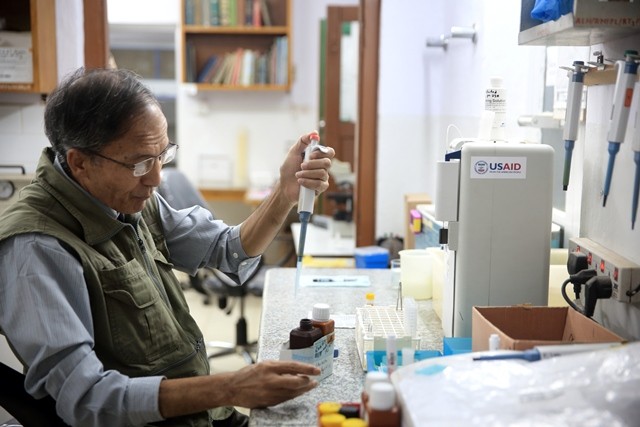
May 2015—Imagine a disease that almost exclusively afflicts the poorest, most isolated communities. Not only can this disease rob its victims of the ability to use their hands and feet, but it stigmatizes them, leaving them disabled, poverty-stricken and isolated from their homes and communities.
Now imagine that there is a place that can help reverse all of that—a place that treats, empowers and reintegrates some of the most marginalized people on earth.
Located on the outskirts of Kathmandu, Nepal, since 1958, the Anandaban Leprosy Hospital is just such a place. The hospital and its dedicated staff take in those affected by leprosy and put them on a path to reintegration.
Leprosy itself is stopped easily by modern medicine, but some of its side effects are irreversible. Unfortunately, those left undiagnosed can lose feeling in their hands and feet, making them vulnerable to wounds and infections. Leprosy can’t cause fingers and toes to fall off, a common misconception, but infections can lead to bone loss.
Dr. Indra Nabin, Anandaban’s medical director and an orthopedic surgeon, works to mitigate some of leprosy’s side effects. With a relatively simple procedure, Nabin can divide ligaments from healthy parts and reattach them so that patients regain the ability to close hands or flex feet. Two of Anandaban’s physical therapists can take over from there, helping patients regain mobility. The resilient and ingenious leprosy survivors learn essential life skills and, for those who have lost feet, receive prostheses produced at Anandaban.
An investment of $250,000 from USAID’s American Schools and Hospitals Abroad program has helped Anandaban’s staff provide this kind of care more efficiently. A new digital X-ray machine has shortened what used to be an hour-long process to just a few minutes and a new digital records system means that patients who return to the hospital—as is often required when the risk of infection is high—will find a detailed case history to guide treatment. These improvements will also help Anandaban serve the increase of general patients from the surrounding community, who help subsidize its leprosy services.
“I look forward to a future where knowledge about leprosy is widespread and Anandaban deals only with the most complicated cases,” said Nabin. “When that happens, we’ll be able to focus on research and training.”
In the meantime, patients still come to the hospital every day seeking care, compassion and a way forward, which the Anandaban staff provides.
LINKS
Follow @USAIDNepal, on Facebook, on Flickr, on YouTube
Follow USAID American Schools and Hospitals Abroad @USAIDASHA1, on Facebook







Comment
Make a general inquiry or suggest an improvement.